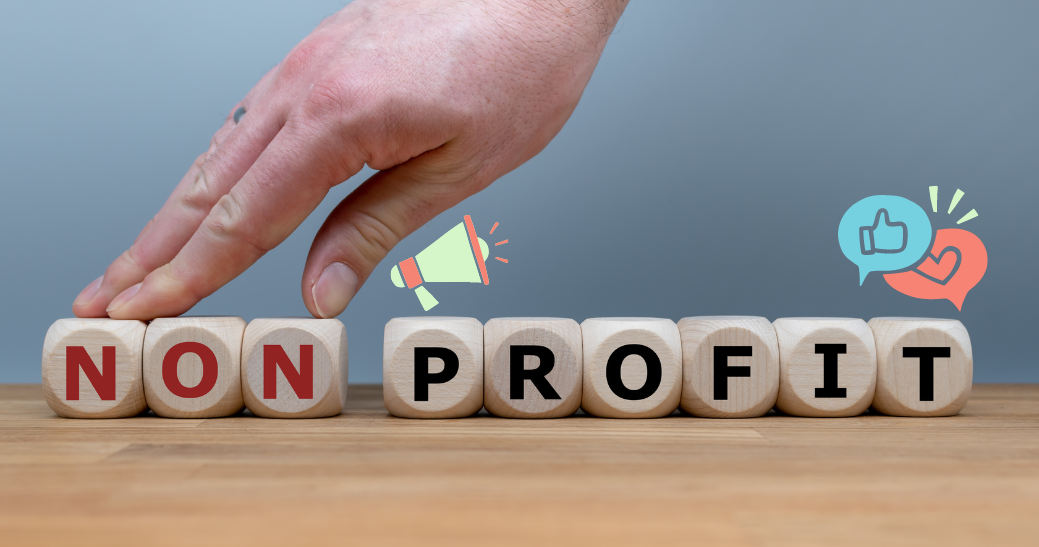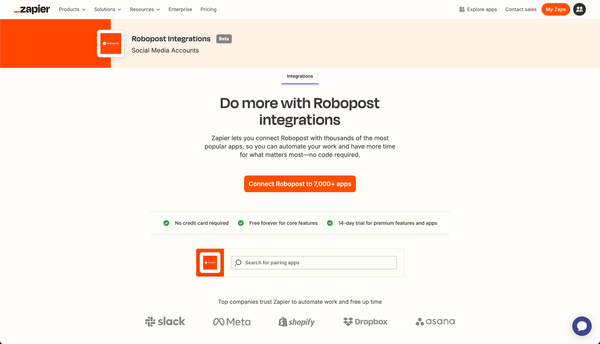Social Media Marketing for Nonprofits: Strategies for Making an Impact
Discover key strategies for nonprofits to harness social media for growth, engagement, and impact. Learn to connect and innovate online.

Non-profits need to use social media marketing to boost their message, connect with supporters, and create real change. This article explores ways non-profits can use social media effectively. We'll cover how to set goals, understand your audience, market content, improve your online presence, and use new technologies to make a lasting impact.
Key Takeaways
- Setting clear and measurable goals for social media helps non-profits connect with their target audience and make the most of their resources.
- Picking the right social media platforms and using storytelling can greatly improve a non-profit's online presence and engage supporters more effectively.
- Regularly posting content that builds connections is important for increasing participation and should be reviewed often for better strategy.
- Improving online visibility with SEO, email marketing, and understanding social media algorithms can expand reach and impact.
- Embracing new technologies like AI, partnering with influencers, and keeping up with digital trends are crucial for non-profits to stay relevant and effective.
Understanding Your Goals and Audience
Setting Measurable Objectives
Setting clear and measurable goals is important for successful social media marketing for nonprofits. These goals will help you measure how well your campaigns are working and guide your decisions. Start by deciding what you want to achieve, whether it's raising awareness, collecting donations, or getting more volunteers.
- Define your goals: Set SMART (Specific, Measurable, Achievable, Relevant, and Time-Bound) objectives.
- Prioritize your budget: Spend your money based on your goals to make sure you're using your resources effectively.
- Monitor ROI: Track the return on investment for each effort to see how successful it is and adjust as needed.
This will help you stay focused and use your resources in the best way possible.
Identifying Your Target Demographic
Understanding who your audience is is the key for a successful social media strategy for nonprofits. Creating personas can help you picture your ideal supporter by showing their behaviors, motivations, and how they might engage with your organization.
With a clear picture of your target audience, you can tailor your content more effectively. Knowing where your audience spends their time online helps you maximize engagement and lead generation. For example, different groups may prefer different social media platforms, so recognizing these preferences is important for reaching them effectively.
Leveraging Social Media for Nonprofit Growth
Choosing the Right Platforms
Choosing the right social media platforms is key for nonprofits wanting to make a big impact online. Find the platforms where your audience is most active. Not every platform will work for every organization, and trying to be on too many can weaken your message and stretch your resources thin.
- Choose the Right Platforms: Pick platforms that are popular with your target audience and where your content fits well.
- Foster a Sense of Community: Use interactive features to encourage conversations among your supporters.
- Showcase Your Impact: Take advantage of visual platforms to share compelling stories and images.
Focus on the platforms that work best for your mission. Investing in good content and building strong relationships with your audience will be more effective than trying to cover every platform.
Utilizing Scheduling Tools for Consistency
Staying consistent is important for keeping your nonprofit's audience engaged and growing your online presence. Using scheduling tools like Robopost, which offers nonprofit discounts, can help you plan and automate your content calendar, making sure your message reaches your audience at the right times, every time.
While scheduling tools help keep your posting consistent, they can't replace real-time interaction. Be sure to regularly check your social media channels, engage with your audience, and adjust your strategy based on how your posts are performing.
Engaging Supporters with Content Marketing
Creating Connection-Driven Content
It's crucial to create content that truly connects with your audience. This means crafting messages that do more than just inform—they should inspire and engage your supporters. To do this, keep these points in mind:
- Align with Your Values: Make sure your content reflects the core values and mission of your nonprofit.
- Share Impactful Stories: Highlight real people and communities to show the difference your work is making.
- Encourage Interaction: Ask questions, create polls, and invite your audience to share their own content.
The goal is to create a story that your audience can relate to and feel a part of. This approach not only boosts engagement but also strengthens the bond between your nonprofit and its supporters, leading to lasting growth and impact.
Boosting Online and Offline Participation
To increase both online and offline participation, nonprofits should connect their digital campaigns with real-world activities. When calls-to-action are clear and engaging, social media engagement can lead to real support, like volunteering and donations.
- Online: Use social media to promote virtual volunteering, webinars, and online fundraisers.
- Offline: Use targeted posts and stories to promote events, volunteer opportunities, and community gatherings.
Tracking how online engagement leads to offline participation is important. Here's a simple way to monitor this transition:
Online Interaction | Expected Offline Action |
|---|---|
Social Media Like | Event Attendance |
Comment or Share | Volunteering Sign-up |
Online Donation | Recurring Support |
Consistency in messaging across all platforms and personalizing the experience for your audience is key. This not only increases your nonprofit’s visibility but also strengthens the connection with your supporters.
Analyzing Content Performance for Strategy Refinement
To make sure your nonprofit’s message connects with your audience, regularly analyzing how your content performs is crucial. This helps you see what’s working well and where you can improve. By looking at metrics like engagement rates, click-throughs, and conversions, you can adjust your strategy to better match what your audience wants.
Here’s a simple way to start analyzing your content:
- Set KPIs: Identify key performance indicators that match your goals.
- Gather Data: Use tools like Google Analytics to collect relevant data.
- Analyze: Review the data to understand how your audience behaves.
- Adjust: Use what you’ve learned to make changes to your content strategy.
The goal is to keep improving. Each piece of content is a chance to learn and get better. By being flexible and responsive to the data, your nonprofit can keep a strong, engaging online presence that really connects with your supporters.
Enhancing Digital Presence and Online Visibility
Optimizing for Search Engines
To effectively use search engines, nonprofits should focus on SEO strategies that boost their online presence. By using organic SEO techniques, they can improve their visibility in search engine results without spending extra money.
- Find Relevant Keywords: Identify the words and phrases your audience uses when searching for topics related to your cause. Include these keywords in your content to make it more relevant in searches.
- Optimize Meta Tags and Content: Create engaging titles and descriptions, and use keywords throughout your content to help search engines understand what your site is about.
- Focus on Accessibility and UX: A user-friendly website is more likely to appear higher in search results.
- Use Linking Strategies: Include both internal and external links to increase your site's credibility and search ranking. Services like ToolPasta offers you a permanent do-follow links to improve your domain rating.
SEO is an ongoing effort, not a one-time task. Regularly review your website’s performance and adjust your strategies to stay competitive in the constantly changing digital world.
Employing Email Marketing Techniques
Email marketing is still a key part of a nonprofit's digital strategy, providing a direct way to build relationships and encourage action. Personalizing your emails to match the interests and history of your audience makes them more engaging.
Automation helps keep communication consistent, allowing you to stay in touch with supporters regularly. For example, automated welcome emails can help keep donors engaged over time. It’s also important to make sure your emails look good on mobile devices since more people are checking their emails on phones.
Testing and improving your email campaigns is crucial to finding out what works best for your audience. Regularly reviewing metrics like open rates and click-through rates gives you the information you need to keep getting better. Here’s a simple guide to improving your email marketing:
- Personalize your messages for different groups of people
- Automate email sequences to save time
- Test and analyze key metrics for ongoing improvement
- Make sure your emails are easy to read on mobile devices
By using these strategies, nonprofits can effectively use email marketing to strengthen connections with their community and encourage continued support.
Embracing Technology and Innovation
Integrating Artificial Intelligence in Nonprofit Operations
Nonprofits are increasingly seeing how Artificial Intelligence (AI) can transform their work. By using AI, organizations can automate routine tasks, personalize communications with donors, and analyze large amounts of data to improve efficiency and make a bigger impact.
- Automate Administrative Tasks: AI can take care of repetitive tasks like data entry, allowing staff to focus on more strategic work.
- Personalize Donor Interactions: Machine learning can customize communications to fit individual supporters, boosting engagement.
- Analyze Data for Insights: AI tools can go through large sets of data to find trends and guide decision-making.
Although adopting AI comes with challenges, such as needing specialized skills and concerns about job displacement, the benefits are substantial. Nonprofits that use AI effectively can significantly enhance their capabilities and results.
Exploring Influencer Partnerships
In nonprofit growth, influencer partnerships are a powerful way to spread your message. This involves teaming up with social media influencers who have a large following to promote your cause and connect with their audience. When done right, this can greatly boost awareness and support.
To make the collaboration successful, follow these steps:
- Find influencers who truly care about your cause.
- Set clear goals for what you want to achieve with the partnership.
- Create campaign guidelines that match your nonprofit's message and values.
- Regularly check in and communicate to see how the partnership is doing and make adjustments as needed.
Conclusion
Social media marketing is a powerful tool for nonprofits to spread their message, connect with supporters, and make a real impact. By knowing their goals and audience, using the right platforms, and creating strategic content, nonprofits can boost their online presence and build stronger relationships with their community. The strategies covered in this article—content marketing, social media engagement, email marketing, SEO, and influencer partnerships—are crucial for a successful digital marketing plan. Nonprofits that adopt these methods can expect better online visibility, higher engagement, and more support through donations and volunteers. As the digital world keeps changing, nonprofits need to stay updated and fully use social media marketing to create a lasting impact.
